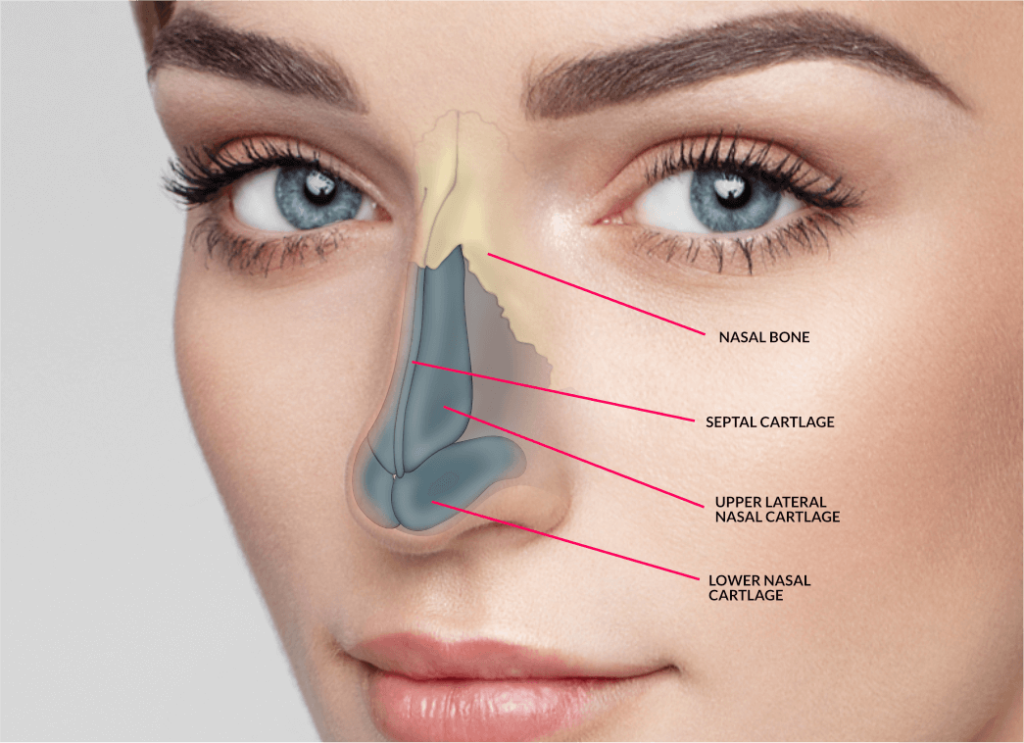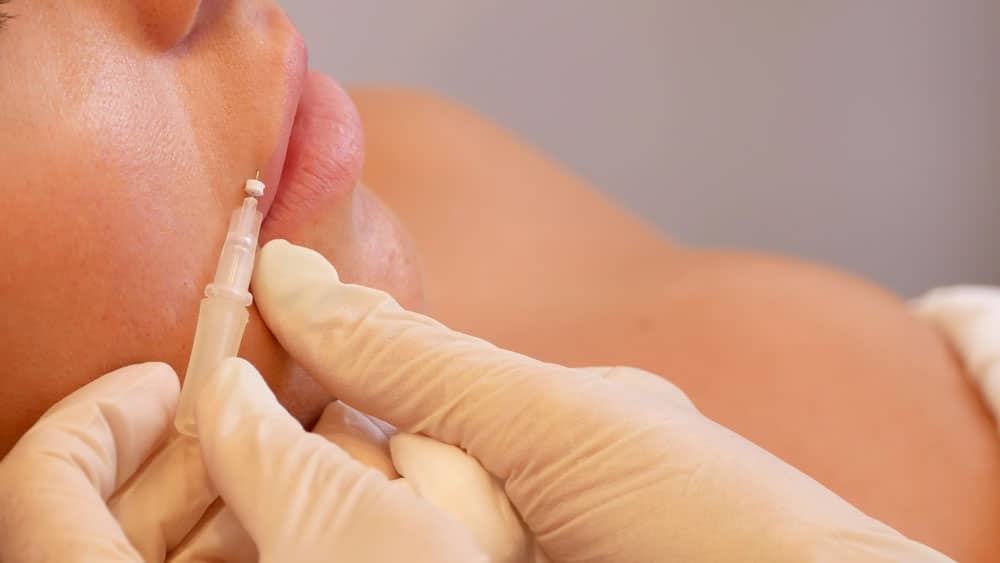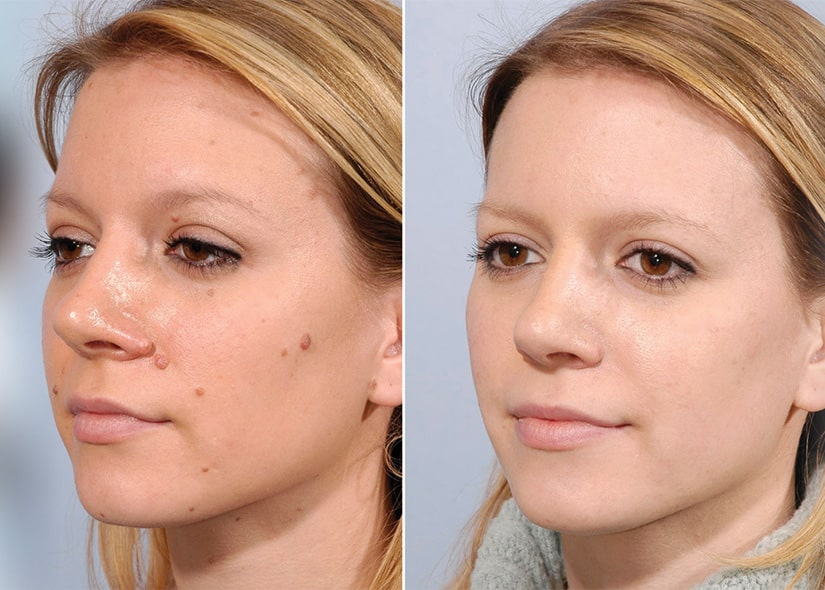Understanding Rhinoplasty
Definition
Rhinoplasty, often known as nose surgery, is a procedure to change the shape of the nose and improve nasal function, typically performed by a plastic surgeon. It can be done for cosmetic reasons or to improve nasal function in a rhinoplasty patient. Surgeons perform rhinoplasty, a plastic surgery procedure, to correct deformities with the external nose and internal nasal structures.
Objectives
Rhinoplasty aims to enhance both appearance and function. For cosmetic reasons, rhinoplasty surgery can reshape a nose that a rhinoplasty patient might find too large, too small, or crooked, with the help of a plastic surgeon for nasal correction. Functional improvements focus on correcting breathing problems caused by structural defects like deviated septums or collapsed nasal valves through nose surgery, often using an open rhinoplasty approach.
Open Rhinoplasty Approach
The open rhinoplasty approach involves making an incision across the columella, the tissue between the nostrils, in nose surgery for nasal correction of the human nose. This method provides better visibility of nasal structures. Surgeons prefer this approach for complex rhinoplasty surgery cases requiring significant changes in incision techniques and skin graft.
Realistic Expectations
Patients need realistic expectations about their new nose. While rhinoplasty surgery performed by a plastic surgeon on the human nose can make a significant difference, it cannot create perfection in nasal function. Surgeons discuss potential outcomes, surgery, open rhinoplasty approach, grafts, and complications with patients beforehand to ensure their goals are achievable.
Impact on Facial Symmetry
A well-performed rhinoplasty by a plastic surgeon can greatly improve a patient’s facial symmetry and aesthetics. The human nose plays a crucial role in balancing other facial features, involving the face, bone, and tissue, often addressed through an open rhinoplasty approach. By refining nasal contours through surgery, surgeons help enhance overall facial harmony.
Nasal Splint Use
After surgery, patients typically wear a nasal splint for support during bone and wound healing on the face. The splint helps maintain the new shape of the nose after surgery and protects it from accidental bumps.
Recovery Process
Recovery from rhinoplasty varies but generally takes several weeks. Initial swelling and bruising subside within two weeks. Full results become visible over several months as residual swelling from surgery dissipates.
Before the Surgery
Medical History
A thorough medical history review is crucial. Patients must provide their complete health records. This includes any past surgeries or injuries to the nose, bone, or wound of the patient. Disclosing previous nasal surgeries helps the surgeon plan effectively. It also ensures a safer procedure.
Physical Exam
The surgeon will perform a physical exam. They assess the patient’s facial features, including the nose’s appearance and structure, considering surgery, bone, tissue, and graft. The doctor examines the bridge, alar base, and overall symmetry of the patient’s face for surgery, considering bone structure and potential graft. This step helps in planning the surgery.
Anesthesia Discussion
Patients need to discuss anesthesia options with their surgeon. Most rhinoplasty procedures use general anesthesia. This means patients are fully asleep during surgery. It’s important to understand how anesthesia works during surgery and its potential risks to the patient.
Planning
Planning is an essential part of rhinoplasty preparation. Surgeons outline what changes will be made to the patient’s nose’s structure, including surgery, bone, and graft. They may use imaging tools to show expected results. This helps patients visualize their new appearance after surgery and set realistic expectations.
Risks and Complications
Discussing potential risks and complications with the surgeon regarding surgery is vital for the patient. Rhinoplasty, like any surgery, has inherent risks such as infection, bleeding, or wound complications. Patients should be aware of these possibilities related to bone, wound, and tissue before deciding on surgery.
Contraindications
Certain conditions can make rhinoplasty unsafe for some people. Patients with severe health issues or unrealistic expectations might not be good candidates for this surgery involving wound, bone, or tissue. The surgeon will evaluate these contraindications during consultations.
Forehead Flap Procedure
In some complex cases, surgeons might use a forehead flap technique in surgery for the patient. This surgery involves taking tissue from the forehead to reconstruct parts of the patient’s nose wound. It’s typically used for significant repairs and requires careful planning, much like surgery on a patient with a wound.
During the Procedure
Open vs. Closed Techniques
Rhinoplasty employs two main techniques: open and closed. The open technique involves a wound incision across the columella, the tissue between the nostrils, for the patient. This allows for better visibility of nasal structures. Surgeons can make precise corrections to bone and cartilage. It is ideal for complex cases.
In contrast, the closed technique involves incisions within the patient’s nostrils and results in a wound. This leaves no visible scars on the outside. The recovery time tends to be shorter. However, it offers limited visibility compared to the open approach for the patient and wound. Surgeons use this method for minor adjustments.
Anesthesia Types
Anesthesia plays a crucial role in rhinoplasty. General anesthesia renders patients unconscious during surgery. This ensures they feel no pain or discomfort.
Local anesthesia with IV sedation is another option. Patients remain awake but relaxed and pain-free. They might feel some pressure but not pain.
The choice of anesthesia depends on several factors:
- Patient’s health condition
- Duration of the procedure
- Provider’s recommendation
Both types aim to ensure patient safety and comfort throughout the surgical procedure, including wound management.

Modifying Nasal Structures
Surgeons modify nasal structures using various techniques to achieve desired patient outcomes and manage the wound. They may remove or reshape parts of bone and cartilage in the patient through the wound.
For dorsal hump correction, surgeons shave down excess bone and cartilage on the bridge of the patient’s nose to avoid wound complications. This results in a smoother profile.
To narrow a wide nose, they perform osteotomies. These are controlled fractures that allow repositioning of nasal bones in the patient without creating a wound.
For tip refinement, surgeons adjust cartilage at the patient’s nose tip to improve shape and definition.
Each maneuver aims for functional and aesthetic improvements tailored to individual patient needs.
After the Surgery
Immediate Care
The first few days after rhinoplasty are crucial. The plastic surgeon will provide specific instructions for care. Keep the head elevated to reduce swelling. Apply cold compresses gently around the nose.
Take prescribed medications as directed. Pain relief and antibiotics are common prescriptions. Clean the wound area with a saline solution to prevent infection in the patient.
Managing Emotions
It’s normal for a patient to feel a range of emotions post-surgery. Some may feel anxious or impatient due to swelling and bruising. These feelings usually subside as healing progresses.
Talking to a patient who has undergone similar procedures can be comforting. Support from friends and family is also beneficial.
Avoiding Complications
Follow all post-operative guidelines strictly to avoid complications. Patient, do not blow your nose or engage in strenuous activities for at least two weeks. This helps prevent bleeding and ensures proper healing.
Avoid wearing glasses that rest on the bridge of the nose until cleared by the surgeon, patient. This prevents pressure on the surgical site.
Sun Protection
Protecting your nose from sun exposure is essential after surgery. Use sunscreen with a high SPF when going outside, even on cloudy days. Wear a wide-brimmed hat for additional protection.
Sun exposure can cause discoloration of scars and prolong healing time. Make it a habit to apply sunscreen regularly.
Physical Activity
Refrain from strenuous activities and heavy lifting for several weeks post-surgery. Light walking is generally acceptable but avoid anything that raises blood pressure significantly.
Consult your surgeon before resuming any exercise routines or sports activities. They will provide guidance based on your progress.
Monitoring Healing
Regular follow-up appointments with the plastic surgeon are necessary. They will monitor your healing process and address any concerns you may have.
Look out for signs of infection such as increased redness, swelling, or discharge from the incision site. Report these symptoms immediately to your healthcare provider.
Swelling Stages
Initial Swelling
Swelling begins immediately after rhinoplasty. It peaks within the first 48 hours. The soft tissue envelope around the nose thickens due to fluid accumulation. This stage can make the nose appear larger than expected.
First Week
By the end of the first week, swelling starts to decrease. Patients may notice a reduction in skin thickness and some improvement in appearance. Cold compresses help manage swelling during this period.
Two Weeks
After two weeks, most of the initial swelling subsides. The nose might still look puffy, but changes are more noticeable. Head elevation while sleeping reduces swelling further.
One Month
At one month post-surgery, significant improvements occur. Swelling continues to go down, revealing more defined nasal contours. Skin texture and color start returning to normal.
Three Months
Three months after surgery, swelling is minimal but not fully gone. The nose looks closer to its final shape. Patience remains crucial as minor changes still happen.
Six Months to One Year
Full recovery takes between six months to one year. During this time, residual swelling dissipates completely. Following the surgeon’s advice ensures optimal results.
Asymmetrical Healing
Common Occurrence
Asymmetrical healing is a normal part of the recovery process after rhinoplasty. Swelling and bruising can cause temporary asymmetries in the nose. These differences often appear more noticeable in the early stages of healing.
Patients should understand that their bodies heal at different rates. Each side of the nose may react differently to surgery. This can lead to uneven swelling or minor deformities initially.
Resolving Over Time
Minor asymmetries usually resolve as swelling diminishes. The body gradually reduces inflammation, leading to a more balanced appearance.
It is important for patients to be patient during this time. Swelling can take several weeks or even months to fully subside. The final aesthetic outcome will become clearer over time.
Follow-Up Appointments
Regular follow-up appointments are crucial for monitoring healing progress. Surgeons can assess any concerns and ensure proper recovery.
During these visits, doctors can provide reassurance and guidance. They might also recommend treatments if necessary, such as massages or medication to reduce swelling.
Addressing Concerns
If significant asymmetry persists, surgeons may consider additional procedures. Cartilage grafts or adjustments might be needed to correct deformities.
Surgeons often use septal cartilage for grafts due to its strength and compatibility. Cartilage harvesting from other areas might be an option too.
Emotional Impact
Asymmetrical healing can affect patients emotionally. Some may experience anxiety or frustration during recovery.
It’s important for patients to communicate their feelings with their surgeon. Open dialogue helps manage expectations and provides emotional support.
Body dysmorphic disorder (BDD) could also play a role in how patients perceive their results. Patients with BDD may focus excessively on minor flaws, causing distress.
Managing Pain
Typical Pain Levels
Most patients experience mild to moderate pain after rhinoplasty. This discomfort is normal and can last several days. Swelling and bruising might also occur, adding to the sensation of pain.
Effective Strategies
Several strategies help manage post-rhinoplasty pain effectively:
- Local anesthesia during surgery reduces initial pain.
- Ice packs minimize swelling and numb the area.
- Keeping the head elevated aids in reducing discomfort.
Medications
Over-the-counter medications like acetaminophen or ibuprofen are often recommended. These help alleviate mild pain and reduce inflammation. For more severe pain, surgeons might prescribe stronger medications such as opioids.
Communication with Surgical Team
Patients should report any severe or persistent pain immediately. Open communication ensures proper management and prevents complications. Surgeons can adjust treatment plans based on individual needs.
Importance of Care
Proper care post-surgery is crucial for recovery. Following the surgeon’s advice on medication, rest, and activity levels enhances healing. Avoid strenuous activities to prevent increased pain or injury.
When to Seek Help
Signs of Infection
Watch for signs of infection after rhynoplasty. Redness, swelling, or warmth around the surgical site can indicate an infection. Fever above 100.4°F (38°C) also suggests complications. Pus or unusual drainage from the nose is a serious sign.
Seek immediate help if these symptoms appear. Early intervention prevents further health issues.
Complications and Risks
Complications may arise post-surgery. Difficulty breathing through the nose is one such issue. Persistent pain that doesn’t improve with medication is another concern. Changes in vision or severe headaches require prompt attention.
In rare cases, complications can be severe. Contact your health care provider if you notice any unusual symptoms.
Post-Operative Check-Ups
Adhering to post-operative check-ups is crucial. These visits allow timely intervention if problems occur. Your surgeon will assess healing progress and address concerns.
Regular follow-ups help detect issues early on. Staying vigilant ensures a smoother recovery process.
Emotional Support
Seeking mental health support post-surgery is normal. Many people experience emotional challenges during recovery. Feelings of anxiety or depression are common but manageable with professional help.
Talking to a therapist can provide coping strategies. Emotional well-being is as important as physical recovery.
Changes in Tip Area
Changes in the tip area of the nose might cause concern. Swelling and bruising are typical but should gradually decrease over time. If swelling persists beyond a few weeks, consult your surgeon.
Any changes in shape or symmetry need evaluation too. Early detection helps address potential problems effectively.
Summary
Rhinoplasty is a transformative journey, from pre-surgery prep to post-op care. Understanding each stage helps manage expectations and ensures a smoother recovery. You’ve learned about the procedure, swelling stages, asymmetrical healing, pain management, and when to seek help.
Ready to take the next step? Consult with a qualified surgeon to discuss your goals and concerns. Your new look awaits! Stay informed and proactive for the best results. If you found this guide helpful, share it with others considering rhinoplasty.
Frequently Asked Questions
What is rhinoplasty?
Rhinoplasty, commonly known as a nose job, is a surgical procedure to change the shape or improve the function of the nose.
How should I prepare for rhinoplasty?
Avoid smoking and certain medications before surgery. Follow your surgeon’s pre-operative instructions closely for best results.
What happens during the rhinoplasty procedure?
The surgeon reshapes the bone and cartilage in your nose while you are under anesthesia. The procedure typically lasts 1-2 hours.
How long does swelling last after rhinoplasty?
Swelling can last several weeks, with noticeable reduction within 3-4 weeks. Complete healing may take up to a year.
Is asymmetrical healing normal after rhinoplasty?
Yes, it’s common for each side of the nose to heal at different rates. Patience is key during recovery.
How can I manage pain after rhinoplasty?
Use prescribed pain medications and follow your doctor’s advice on cold compresses. Keep your head elevated to reduce discomfort.
When should I seek help after rhinoplasty?
Contact your doctor if you experience severe pain, excessive bleeding, or signs of infection like fever or unusual discharge.










